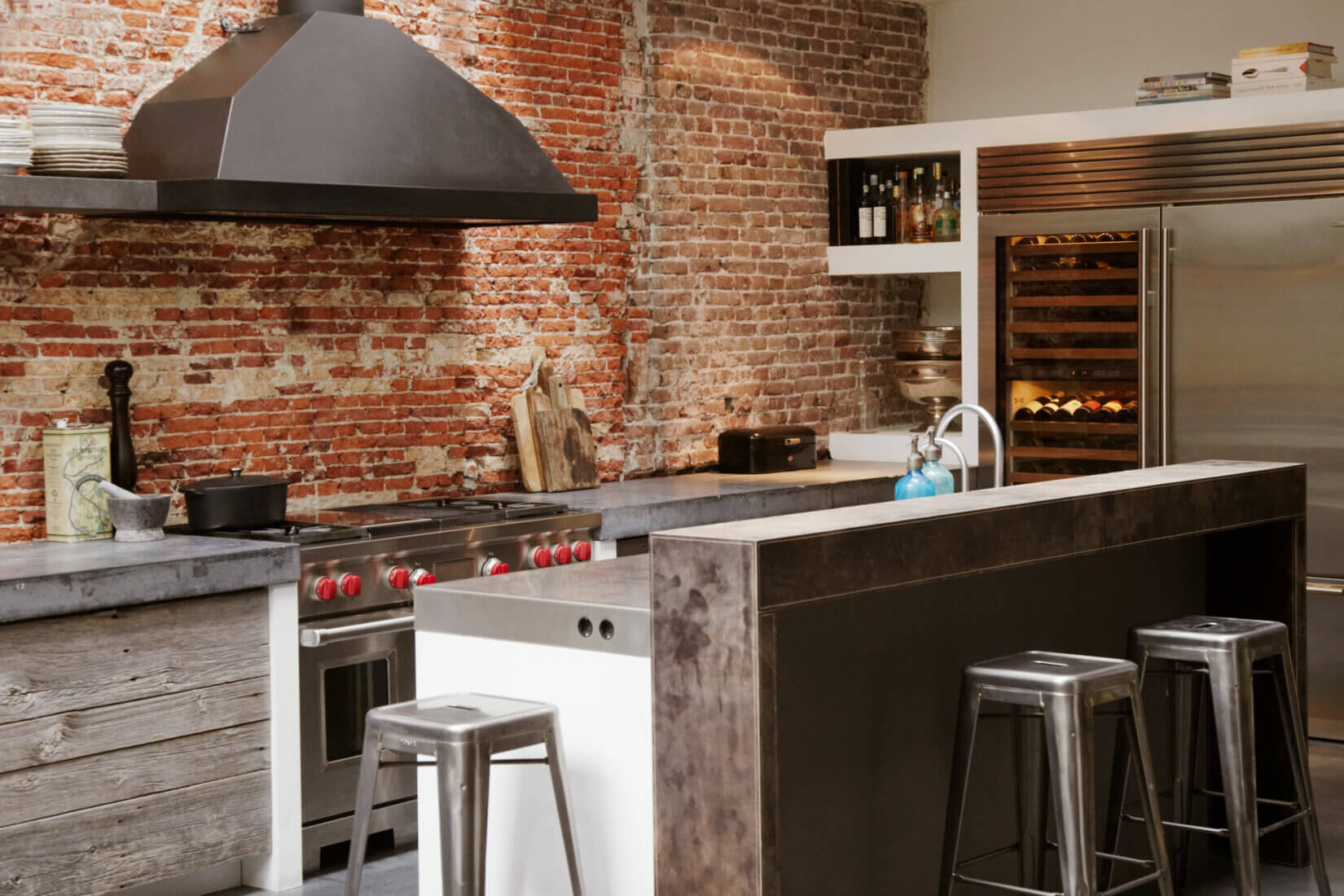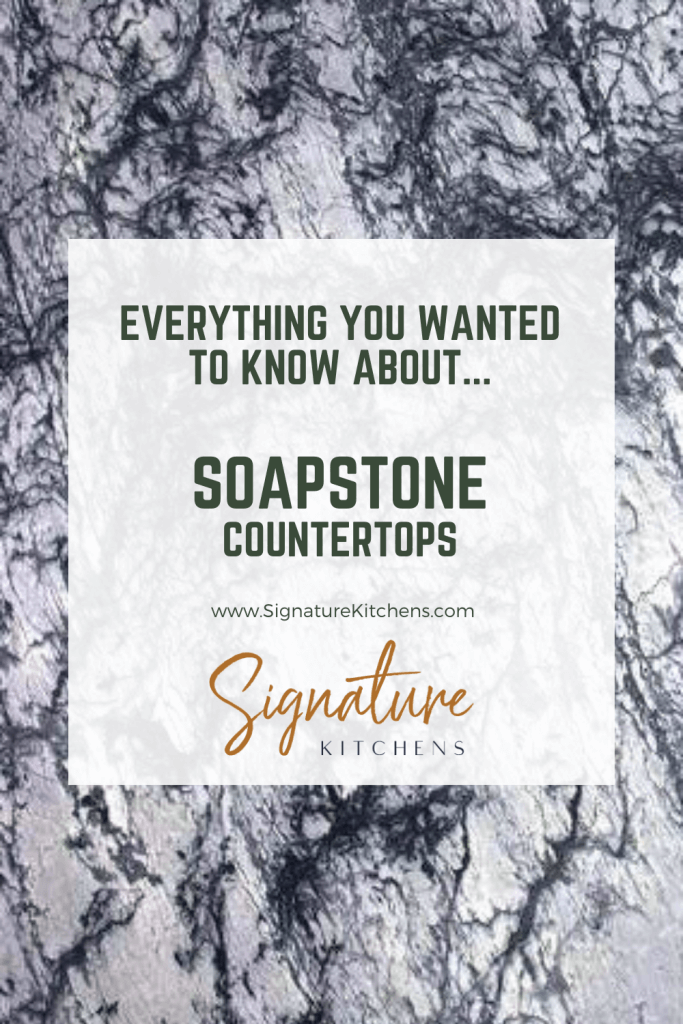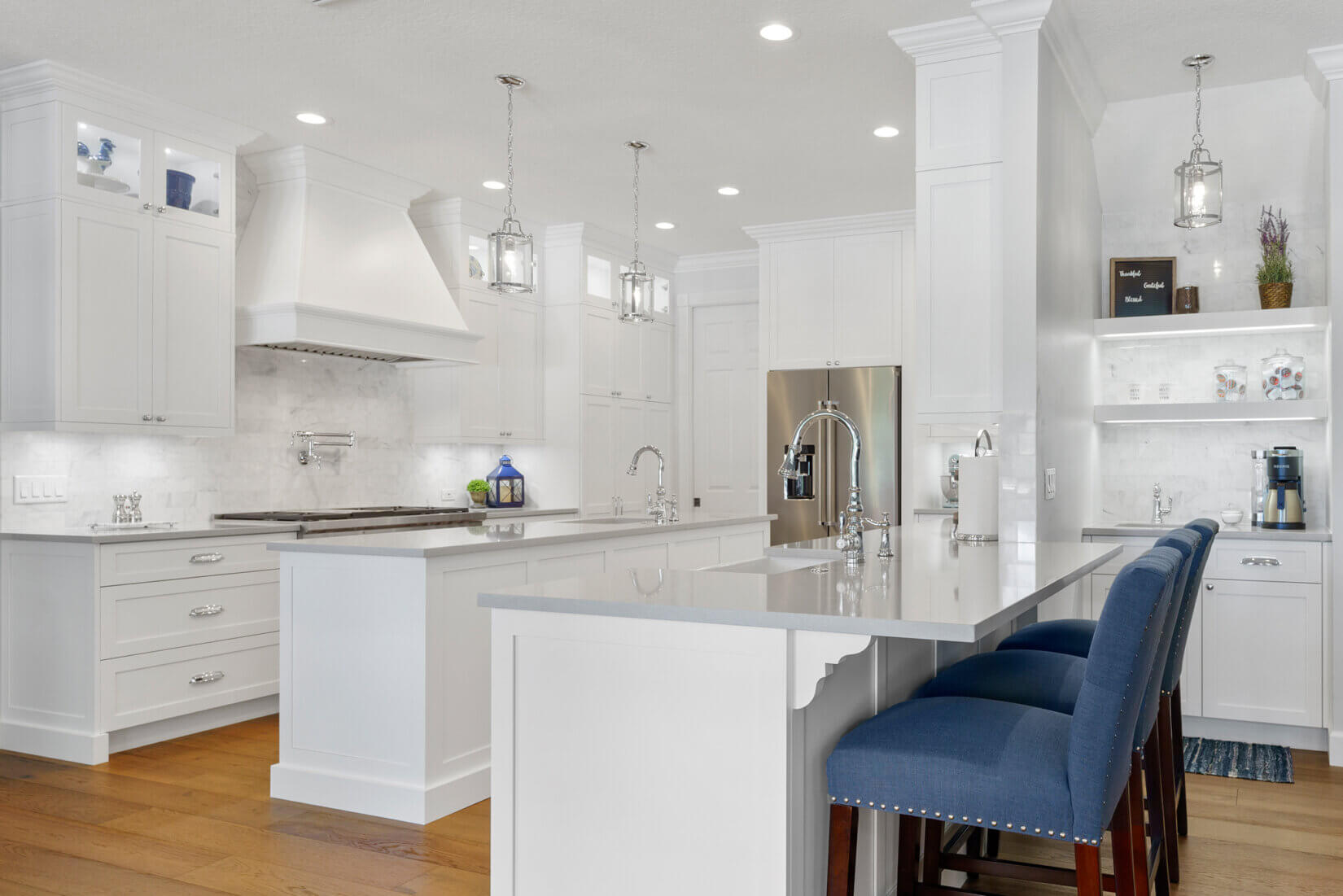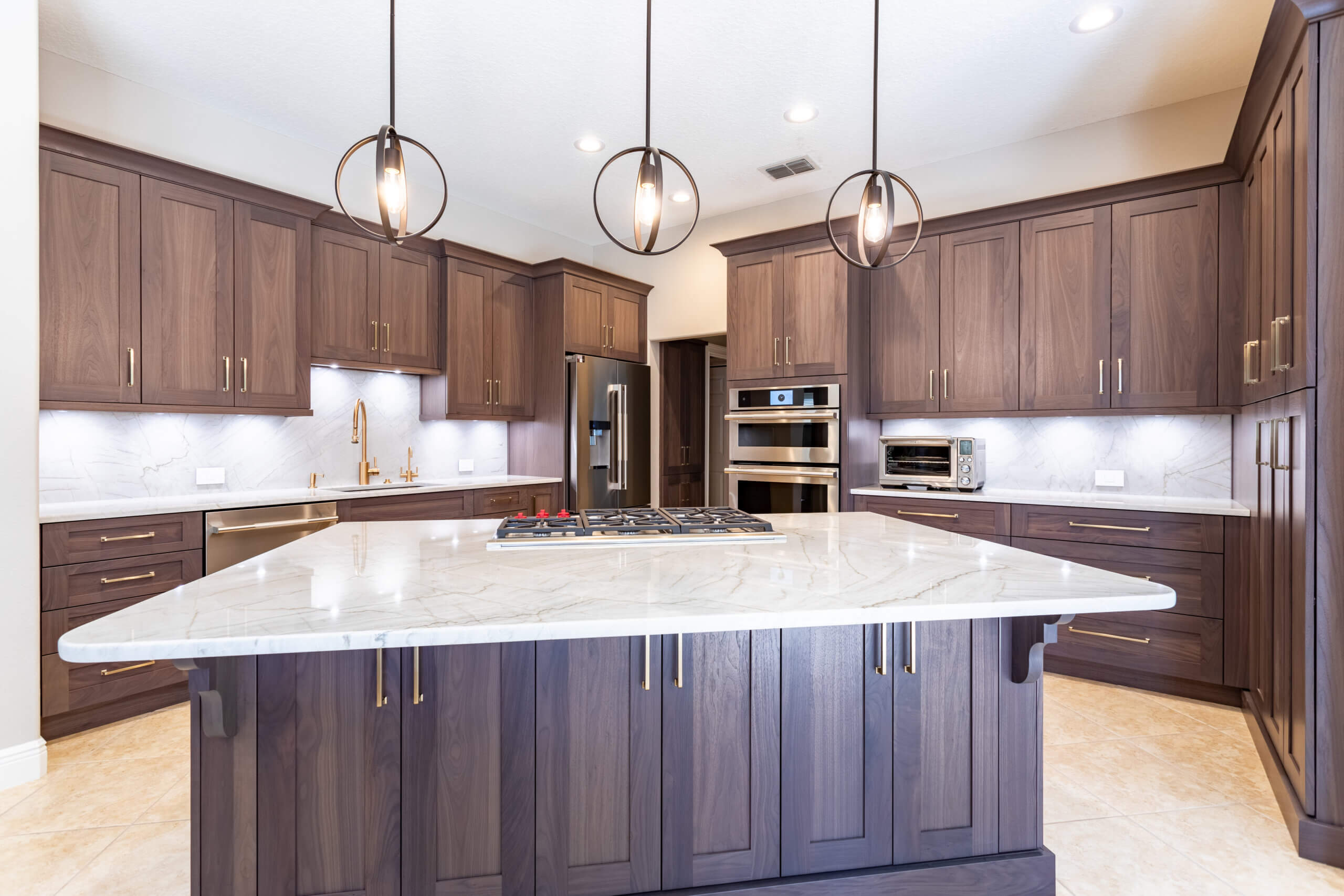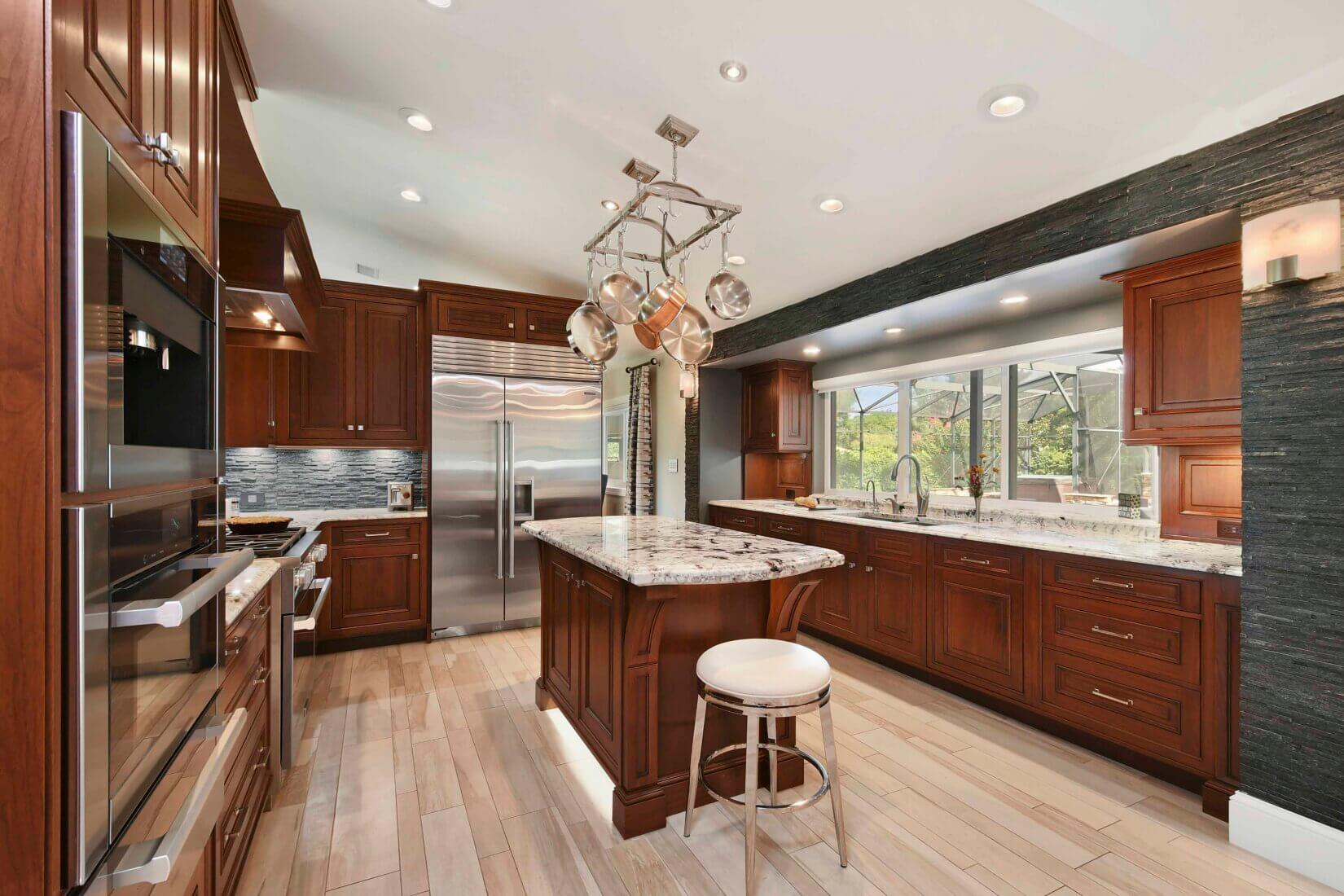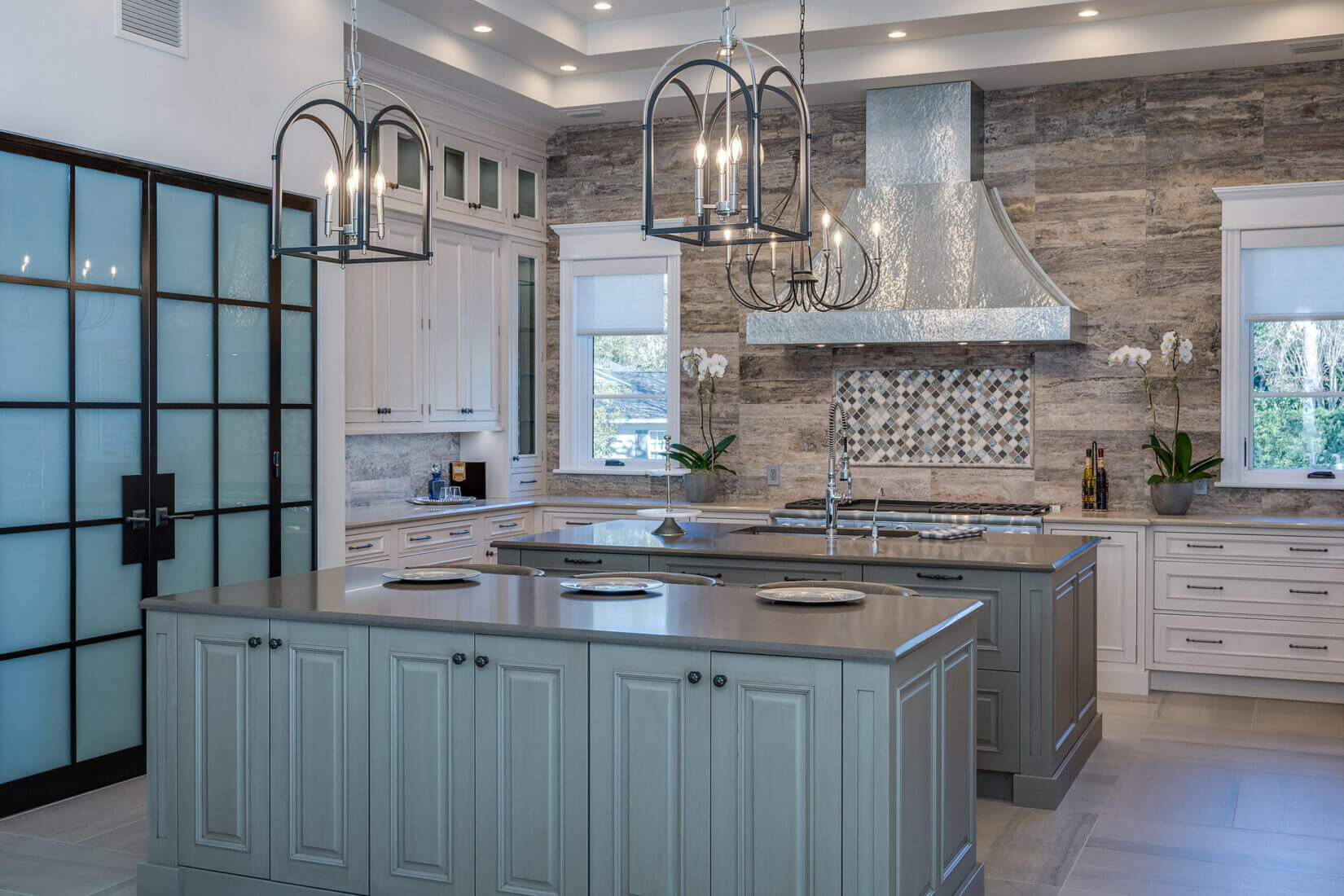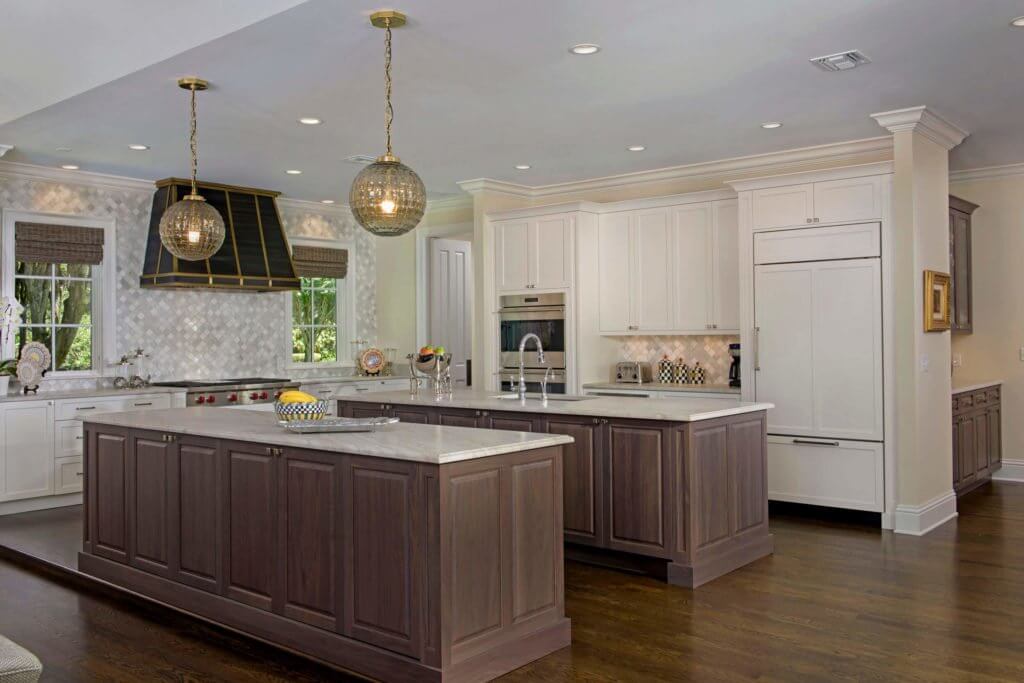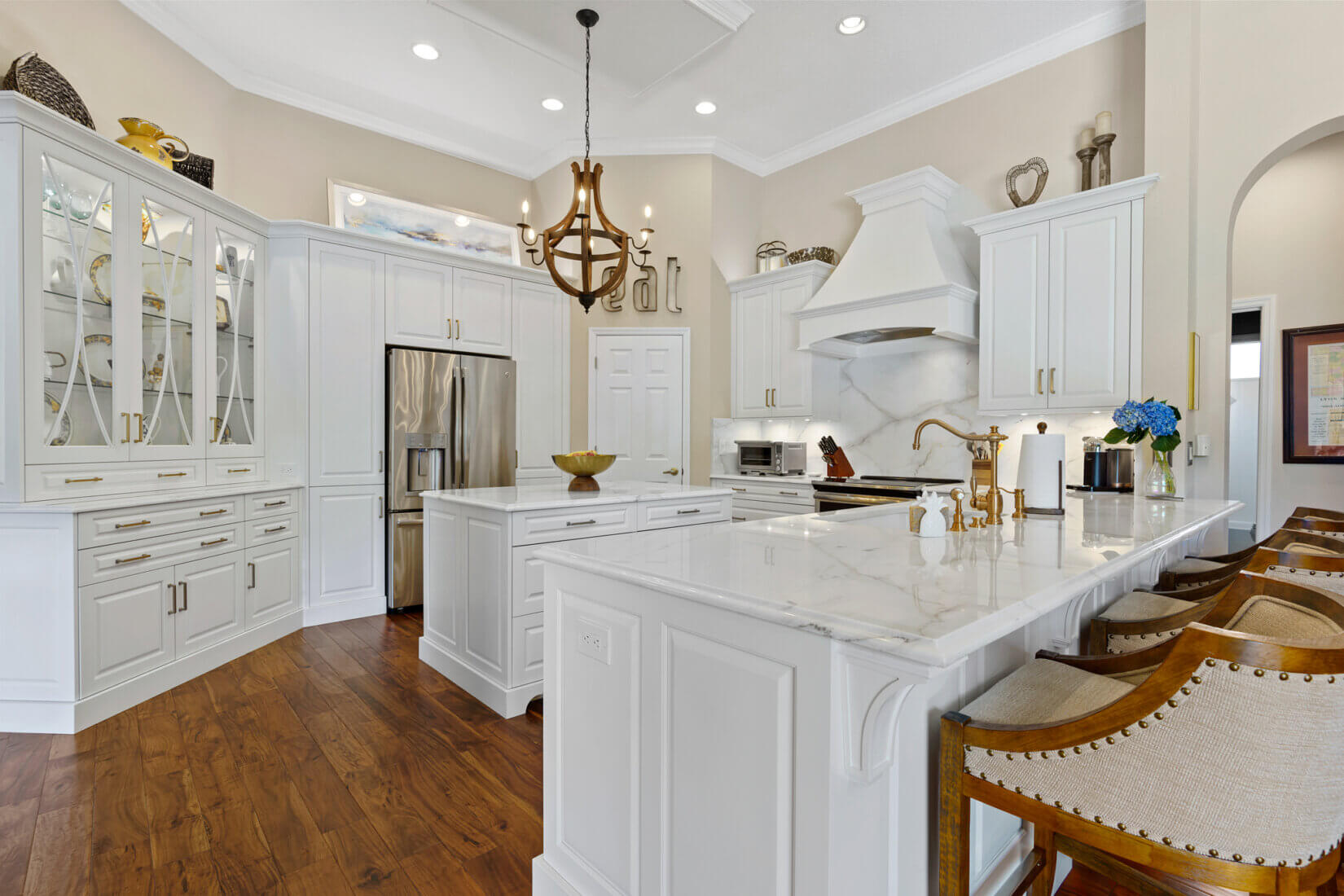How Much Do Soapstone Countertops Cost?
Soapstone is on the high end of countertop materials and is significantly more expensive than granite and on par with quartz for the most part (the high end of the range for soapstone is more expensive than quartz). In Orlando, FL you can expect to pay in the range of $70 to $120 per square foot for a soapstone countertop. This range obviously depends on the rarity of the slab and the talc content of the slab.
If cost is a major consideration for you, then you may not find soapstone to be entirely within your interest as cheaper alternatives exist such as granite although granite does not have the same durability that soapstone does as we will come to see.
The Strength of a Soapstone Countertop
Following price, hardness is arguably the second most important consideration for any material being used as a kitchen countertop, which is to be expected since you will naturally expect to be able to place everyday kitchen items on your countertop without having to worry about damaging it.
Due to the high talc content present within it, soapstone is a relatively soft material, especially when contrasted with other naturally occurring minerals such as granite and even marble. Soapstone has a moh scale of mineral hardness ranking of 2.5 to 3.5 which means that it is on par with the hardness of marble. The Mohs scale is a 10 point scale for mineral. In contrast to soapstone, marble has a moh ranking of 3 while granite has a much higher ranking at 7.
This makes soapstone one of the softest kitchen countertop materials of all, and due to this, it is also extremely susceptible to scratches although, as we shall soon learn, scratches can be very easily removed from soapstone as well. Due to the lack of hardness though, you may find that soapstone is not able to withstand force as effectively as granite which should have an impact on whether or not you should opt for soapstone depending on your needs.
How Easily Can A Soapstone Countertop be Damaged?
Like many other countertop materials you should never attempt to stand on it and sliding heavy pots and pans around can scratch it. It is also not recommended that it be used as a cutting board as knives will damage the surface. Although scratches on a soapstone countertop is easily repaired.
The real durability of soapstone comes from the fact that unlike most other natural minerals used for countertops, such as marble or granite, soapstone is a completely non-porous material. Eventhough soapstone has the same hardness as marble the density of soapstone is very different. It is the density which gives a soapstone countertop the stain resistance and benefits of quartz while still being a natural material.
Overall, soapstone countertops are one of the most durable natural materials available and are a great choice for use as a kitchen countertop provided you are careful to not drop heavy items upon your counter or cut directly upon it without a cutting board.
How Temperature Resistant are Soapstone Countertops?
Following natural hardness, temperature resistance is the next most important consideration for choosing a countertop material since you will want to be able to easily set hot objects upon your counter without the fear of causing damage to it.
In this regard, soapstone is one of the most ideal materials available since they are extremely heat-resistant due to the fact that it is produced by metamorphosis. A soapstone countertop will not get damaged or burned if you place a hot pot or pan on top of it either. Essentially, it is one of the most durable natural materials of all when it comes to temperature resistance which makes it a deal for use in areas that experience high temperatures.
Soapstone is also a great conductor of heat, so you will find that your soapstone countertop to be much cooler to the touch than granite, for example. Soapstone is also commonly used around fireplaces for this very reason as well.
Soapstone Countertop Weaknesses
Although soapstone has many great advantages, it is inevitable that there will be some drawbacks as well. Primarily, the fact that soapstone is a very soft material when compared with other common stones used to produce countertops, it is very vulnerable to being scratched. If you decide to cut on top of your soapstone countertop without the use of a cutting board, you will inevitably begin to see some scratches on its surface which is extremely undesirable. Scratches on soapstone are, however, not particularly difficult to remove though.
The fact that it is a non-porous material, prevents it from experiencing the same damages from abrasive substances such as vinegar, Windex, ammonia, and bleach that other countertops typically experience. So, overall soapstone is one of the most durable natural countertop materials out there, and if you are someone who worries about the possibility of their countertop being damaged easily, especially from high temperatures or spills, soapstone may be one of the best materials for you.
Soapstone Countertop Maintenance
Soapstone is a relatively low maintenance option since its lack of porousness means that it does not need to be re-sealed annually the same way that marble or granite does. Soapstone can also be cleaned easily with common abrasive household cleaners such as Ammonia Windex, vinegar, and bleach since they will not seep into the surface of the material and cause damage.
Soapstone will scratch easily as we’ve already established, but scratches can also be removed easily by using sandpaper and applying some mineral oil.
Soapstone also tends to gray over time, so it will lose its appearance unless you apply mineral oil to its surface every once in a while. Applying mineral oil will help preserve its natural appearance and prevent discoloration.
Overall, soapstone is a low-maintenance option that does not require the same effort or financial investment that other natural materials often need.
The Pros of Using Soapstone
Stain-Resistance
Soapstone will not get stained if chemicals or liquids are spilled on it since it is a non-porous material.
Natural Product
In an era where synthetic materials are becoming increasingly more common, using soapstone can really make your kitchen stand-out and provide some uniqueness to it.
Non-Porous
Being non-porous also reduces maintenance costs considerably as a soapstone countertop will not need to be re-sealed.
Easily Repaird
Soapstone can be scratched easily since it is a soft material, but with some sandpaper and mineral oil, most scratches can be removed relatively easily.
Longevity
Soapstone has been used for architectural purposes for a very long time due to the fact that it is a very durable material that will remain intact for extremely long periods of time.
The Cons of Using Soapstone
Susceptible to Patinas
Depending on your personal position on patinas, this may or may not be a concern for you but a soapstone countertop will inevitably develop a patina over time.
Expensive
Soapstone is not a budget-friendly material and can be considerably more expensive than granite or butcher block.
Requires Oiling
Mineral oil must be applied to soapstone to prevent it from experiencing discoloration over time which is the major maintenance required for this material.
Limited Color Choices
Most soapstone countertops will be available in shades of gray with perhaps some hues of blue or green. Apart from this though, there is little to no color diversity due to the fact that soapstone is a natural material whose color cannot be changed as easily as an engineered product such as quartz or solid surfaces.
Weakness to Sharp Objects
Soapstone can be easily scratched with sharp objects such as knives, so it is necessary to use cutting boards while cutting on the countertop.
Soapstone Grays Over Time
Soapstone experiences discoloration over time due to natural processes such as oxidation. Depending on where you acquire your soapstone countertop from, it may be possible to only slightly delay the onset of graying using mineral oils.
